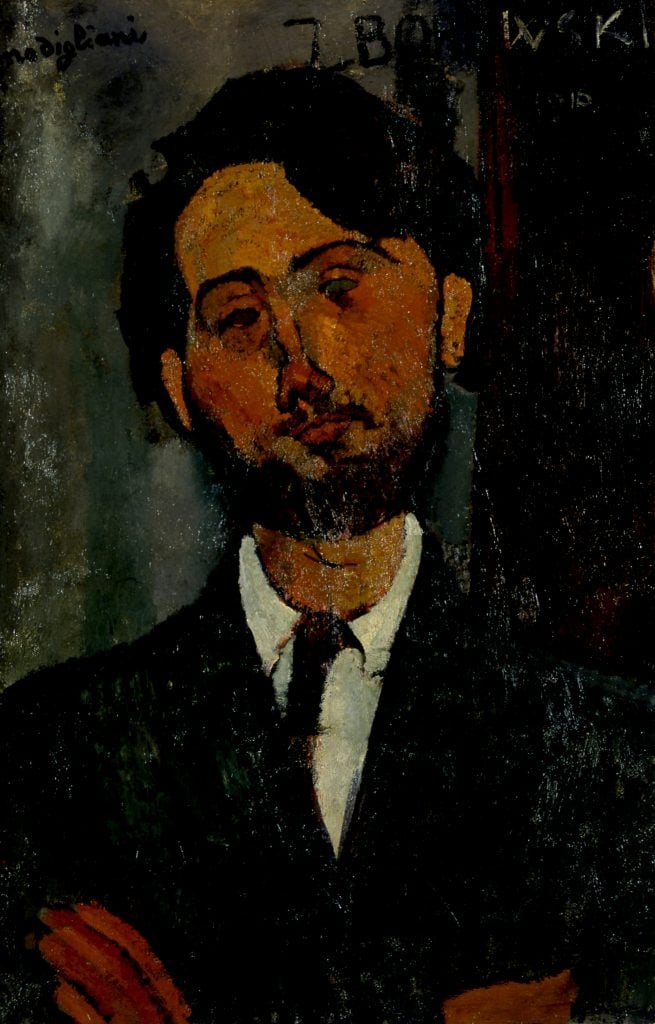Museums & Institutions
Israeli Museums Are Removing Their Names From Loaned Artworks
Israeli museums are taking new precautions to protect their collections from being vandalized at foreign museums.

Israeli museums are taking new precautions to protect their collections from being vandalized at foreign museums.

Jo Lawson-Tancred

Following the Hamas-led attack on October 7, some Israeli museums have been minimizing their visibility on loaned works. The Israel Museum has asked that its name not be printed on the labels that accompany its artworks when they are on display at foreign museums. Other institutions, like the Reuben and Edith Hecht Museum at the University of Haifa, have chosen to be named but not to specify their location.
These policies, which were never publicly announced, were first reported on in the Israeli newspaper Haaretz by Naama Riba. She noticed the discrepancy in the labelling of works she recognized as being from Israeli museums compared to those from other collections while visiting the “Modigliani: Modern Gazes” exhibition at Museum Barberini in Potsdam, Germany, which opened in April.
The artist’s Nude with a Hat, from the Hecht Museum’s collection, has another portrait on its reverse that was only recently rediscovered. Its label names the museum as its lender but does not specify the institution’s location unlike other labels that for works loaned from museums like the Belvedere in Vienna or The Courtauld in London.
The Israel Museum has loaned a portrait by Modigliani of his patron Léopold Zbrorowski for the show, but the identifying wall label only indicates that it came from an “anonymous lender.” As Riba pointed out, this term is more often used by private collectors.
Both museums did not respond to a request for comment.
Suzanne Landau, the director of the Israel Museum, told Haaretz the decision was made in response to the mounting “demonstrations and hostility toward Israel.”
Since Hamas’s attack on Israel on October 7 that killed 1,200 people and saw more than 240 taken hostage, Israel’s ensuing war on Gaza has killed more than 39,175 Palestinians, including more than 15,000 children, and has left an estimated 2.3 million people in the region displaced, according to a recent report by Reuters.
Museums across the world have become popular sites of protest. In the last couple of years, climate activists have often targeted artworks in museums as part of their protest actions. Since last October, pro-Palestine demonstrations have taken place at the British Museum in London, the Met and the Museum of Modern Art in New York, and the Hamburger Bahnhof in Berlin. Though arrests were made at some of the events, there were no reports at the time of any damage to artworks at these protests.
In June, the private residence of Brooklyn Museum director Anne Pasternak was vandalized by activists who accused her of being a “white supremacist Zionist.” The homes of the museum’s president and two board members were also targeted.
Landau said she could not ignore the protests and the demonstrations and the hostility toward Israel, according to the Haaretz report.
“We understood that in the current situation we have an obligation to protect our collections, and that is also part of Israel’s Museum Law,” she said. “So we decided on a compromise, in which the source of the work would not be written [on the wall text], but would appear in the catalog as usual.”
In one case, she claimed an unspecified museum in Australia “refused” to cite the Israel Museum on both its wall texts and the exhibition catalog, though Landau did not clarify whether this was to protect the work in question or for another reason. She also alleged there had been loan cancellations from other museums since last October.
The Israel Museum did not return a request for further comment on the cancelled loans.
The institution currently has several other works on loan, including a Peter Paul Rubens painting at Rome’s Borghese Gallery and three paintings by Chaïm Soutine that were loaned to the Louisiana Museum of Modern Art in Denmark for an exhibition that closed in mid July.
Both the Israel Museum and the Tel Aviv Museum of Art are expected to loan works to a Marc Chagall exhibition opening in September at Vienna’s Albertina.
The Tel Aviv Museum of Art has said it does not plan to remove its name from international loans. Its director Tania Coen-Uzzieli told Haaretz, “I don’t intend to hide away. I trust the borrowers to protect the works.”